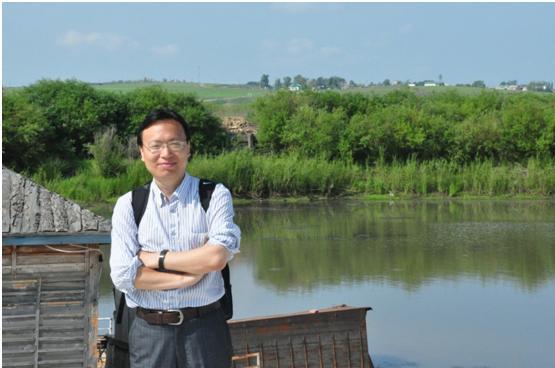A Chinese professor introduced Bible translations in different historical periods after Christianity entered China, drawing an outline of the history of Bible translation in the country and how the holy book gradually became a part of China.
On September 20th, Professor Liu, a doctoral supervisor at the School of Philosophy of Fudan University, gave an online lecture titled “Abraham’s Three Religious Systems and Chinese Bible Translation: Taking the Eight Classic Translation Examples”.
Professor Liu began by introducing the main Bible translations in different periods based on Christianity’s introduction into China. He demonstrated a list of nearly 100 Bible versions: Roman/Chinese Catholic Chinese Bible Version, Protestant Bible Version, Protestant Mandarin/Mandarin Chinese Bible Version after the “Mandarin Union Version”, and Chinese dialectal versions, etc. After illustrating the eight major translations events, Liu introduced Nestorianism, the Torah of Jews in Kaifeng, Montecorvino’s version in Yuan Dynasty, Jean Basset’s version, Morrison-Marshman’s Version, Union Version, and John Duns Scotus’ Version. Showing the photos of original copies of those versions and analyzing the success or failure of each version, he discussed the process of sinicization of the Bible canon.
When introducing Karl Friedrich August Gützlaff’s Version, Liu said: “Although Gützlaff’s translation had not been very influential in China, it was adopted by Hong Xiuquan, who printed it in large quantities and sent the copies to his Taiping Heavenly Kingdom Army.” The version was published by a team of four translators led by Gützlaff. In 1837 and 1840 respectively, the team’s ‘New Testament’ and ‘Old Testament’ were published. However, when Hong Xiuquan (leader of Taiping Heavenly Kingdom Army, translator’s note) used it, he revised the so-called “mistakes” in Gützlaff’s Versions and altered parts of the Bible.
When introducing the versions of different periods, Professor Liu emphasized, “All the Bible translation work involved Chinese participants including the Chinese Union Version.”
He explained that the early Chinese versions were all written in classical Chinese or high Wenli. At the beginning of the 19th century, due to the development of language and social changes, classical Chinese had been replaced by easy Wenli. Bible translation followed this trend by publishing easy Wenli versions, such as Griffith John’s Wenli Version and Samuel Issac Joseph Schereschewsky’s Versions (also called as One-finger and Two-finger Version as he painfully typed out with one or two fingers his Mandarin translation due to limb paralysis). Schereschewsky was a Russian Jew who was proficient in Hebrew, known as the Prince of Bible Translation. He was paralyzed by heatstroke during his translation work and he could only work with one or two fingers but still managed to complete it.
In the mid-19th century, Mandarin was used by Chinese imperial courts and officials all over the country. As a result, Mandarin versions were born. Walter Henry Medhurst and others translated the New Testament into Nanjing Mandarin; John Burdon and others completed the New Testament in Beijing Mandarin; Schereschewsky completed the Old Testament in Beijing Mandarin, and the British Bible Society printed them together as The Old and New Testament. The Mandarin Bible, which was translated by the Beijing Translation Committee in the 1970s was a vernacular Bible before the birth of the Chinese Union Version, had been widely used in the country for 40 years.
In 1890, the second General Conference of the Protestant Missionaries of China held in Shanghai decided to produce a nationwide translation of the Chinese Bible, which is called “The Union Version”, with the principle of “one Bible in three versions”. In the following year, three committees were formed to be responsible for the translation in three Chinese language styles - high Wenli, easy Wenli, and Mandarin. In 1907, after more than ten years’ translation of the three “Union Versions”, missionaries held a conference again in Shanghai. At the conference, it was decided to merge the “high Wenli” and the “easy Wenli” Versions, and only publish the “high Wenli and easy Wenli Union Version”. The “Mandarin Union Version” project was to be continued. In 1919, the “high Wenli and easy Wenli Union Version” and the “Mandarin Union Version” were published. The “Mandarin Union Version” was a pioneering masterpiece in the vernacular movement at that time.
After 1919, Bible translation was no longer led by missionaries but by the Chinese.
In 1715, the Russian Orthodox Church sent the first missionaries to Beijing to officially preach in China. They translated the Bible into Chinese for the first time in the late 19th century.
The first Old and New Testament translated by Roman monks in China, which was also the first Chinese version of the Bible translated to be from the original text, was the work by the Studium Biblicum Franciscanum. There are more than 2,000 pages in the book, with a brief introduction, annotations, drawings, appendices, and many color maps. It is called “the first translation of Chinese Catholic Bible from the original text, with careful notes”.
Finally, Professor Liu concluded that after the hard work of missionaries and Chinese people in China, the Chinese Bible enjoyed a presentation of “100 versions of brilliant works”. Whether the Bible was translated under the auspices of missionaries or it was independently completed by Chinese later, in fact, there were indirect or direct efforts made by Chinese people. Bible translation in China itself was a process of communication and dialogue between the Chinese civilization and the Jewish-Christian civilization and was the fruit of mutual understanding and learning between the two civilizations.
He emphasized that the greatest and most outstanding achievement of the sinicization of Christianity was the Chinese Bible translations, among which the Chinese Union Version and John Duns Scotus’ Version had the highest achievements.
“The Chinese Union Version and John Duns Scotus’ Version have become the models of how the Bible became part of China,” he concluded.
- Translated by Charlie Li












